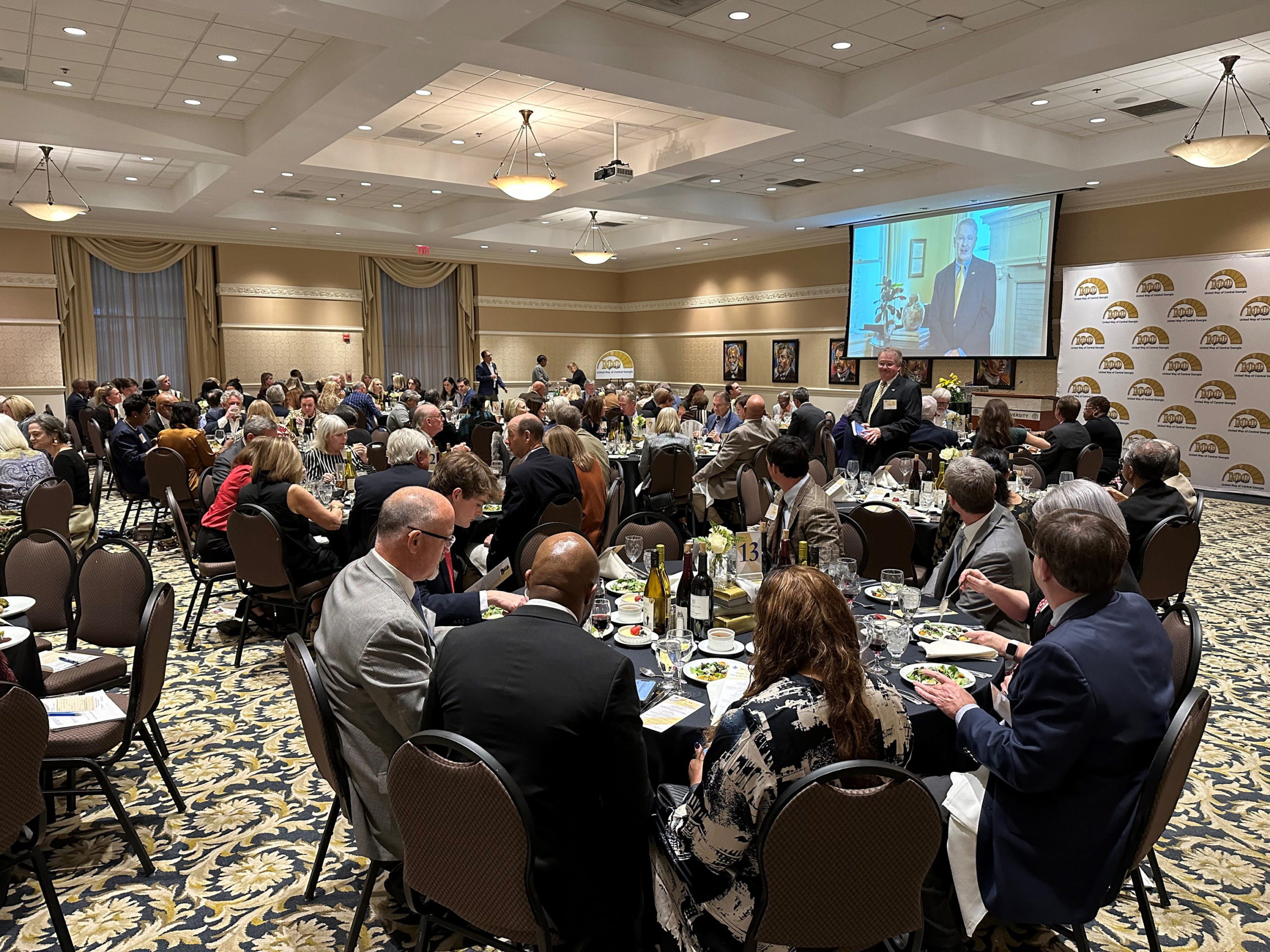
Local United Way Tocqueville Society Grows Leaps & Bounds – George McCanless
January 15, 2023
[PODCAST] Turning Website Visitors into Donors with the Google Ad Grant
January 20, 2023New Year’s Resolutions for U.S. Giving

New Year’s Resolutions for U.S. Philanthropy is fundraising veteran Jim Eskin’s take on what we can all do to improve our craft in 2023. This is the time of year for setting goals to improve the quality of our lives.
Popular resolutions include losing weight, eating healthier or changing diet, getting fitter and exercising more, and spending more time with family, friends and loved ones.
This is also an excellent time for essential sectors of society to take stock and look for opportunities for improvement. Ranking high on the list of sectors that make a difference is philanthropy — the voluntary sharing of the gifts of time, talent and treasure. As you grow older you come to appreciate that time is the most precious of these gifts because, unlike money, it can never be replaced.
Philanthropy reflects the best that is in us, or as Abraham Lincoln expressed it in 1861, “the better angels of our nature.”
New Year’s Resolutions for U.S. Philanthropy
Americans have an awesome story to tell about their deep-rooted tradition of sharing and caring to improve the lot of others, especially helping those who are struggling. But like every part of life, there is always room for improvement. That is what progress is all about.
As a fundraising trainer/consultant who’s had the privilege of working with a wide range of nonprofits and a diverse group of professional and volunteer non-profit leaders, I want to highlight 10 pragmatic ways that the beauty of American philanthropy can shine more brightly.
- Encourage a broader share of households to commit to giving. While American philanthropy totaled an awesome $485 billion, for the first time in nearly two decades, only half of U.S. households donate to a charity. This confirms a concerning trend: Donations to charitable causes are reaching record highs, but the giving is done by a smaller and smaller slice of the total American population. As recently as 2000 the share was about two- thirds of American households. The impact of high inflation certainly is impacting 2022 results. The nonprofit sector must maintain a commitment to nurturing giving among people from all different socio-economic backgrounds.
- Salute that volunteering is an essential part of philanthropy. An estimated 30% of U.S. adults, 77.9 million Americans, volunteer their time, contributing an estimated 5.8 billion hours, valued at approximately $147 billion. Just as the nation’s 1.5 million non-profits couldn’t exist without financial support, they couldn’t thrive the way they do without volunteers. This is also a prudent fundraising strategy. Americans who volunteer their time and skills to nonprofits donate an average of 10 times more money to charity than people who don’t volunteer.
- Revisit mission, vision and values. Remember, donors aren’t choosing between the good and the bad, but between the good and the good. What can your non-profit tell donors that all the other good causes can’t? Has your mission kept pace with the enormous changes we’ve experienced in recent years? Be sure to include those served in these crucial conversations among the non-profit stakeholders.
- Collaborate like the world depends on it. There are many win-wins out there for non-profits sharing mission space. The obvious one is making joint requests that funders love to receive. There are several others such as teaming up on services, programs and back-office operations.
- Ask enthusiastically for unrestricted gifts that empower organizations to use funds when and where needed most. MacKenzie Scott set an inspiring example by contributing $14 billion in unrestricted funds recognizing recipients who understand best how to put the money to good use. Too many non-profits shy away from such solicitations with self-defeating attitudes that donors won’t respond favorably. Consider that people don’t designate purpose when investing in the stock market and rely on monitoring the company’s bottom line performance. Why should nonprofits be any different?
- Leadership leads by example. It starts with the board and management who will set the fundraising chessboard for everything that follows. Any campaign starts by challenging board members and management to make their personal stretch-but-realistic gifts. Quite simply, they won’t have credibility in the community when soliciting others if they have not given at a personally significant level themselves.
- Keep existing donors in the tent. The average donor retention rate hovers at around 40% to 45% across the nonprofit sector. This means that if 100 donors give to an organization in a given year, then only about 40 of those donors will give again the following year. This is a flawed business model. The cost of acquiring new donors can be 50% to 100% more than the dollars given by them. Communications and stimulating donor engagement is a necessity.
- Prepare for the largest wealth transfer in history of a mind-numbing $68 trillion from the baby boomer generation. There are only three places that treasure chest goes — loved ones, the government or charity. Donors can typically make legacy gifts from estates several-fold larger than gifts from income, while potentially postponing any out-of-pocket expenditure. The overwhelming majority of these are charitable bequests, retirement plans and life insurance policies.
- Come together to solve the dramatic professional fundraiser turnover crisis. This problem has nagged the nonprofit sector for a long time and is just getting worse and worse. Surveys indicate that half of development directors anticipate leaving their job in two years or less — and the smaller the nonprofit, the higher rates of turnover and loss of talent. What’s more, 40% of development directors are not sure if they will even continue in the career path at all. This is robbing the non-profit sector of one of its irreplaceable resources — trust capital, professionals working with donors that understand their personalities, stories and priorities. The solution is more complex than just compensation and includes setting realistic expectations, allowing for work-family balance and welcoming input on decisions in and outside the resource development space.
- Invest in fundraising training delivered in person or via the internet to all those involved in discovery, cultivation, solicitation and stewardship. Of course, as a fundraising trainer/consultant, I have to include that on the list. The return on investment is well documented. Frankly, I’ve discovered most professional and volunteer non-profit leaders are scared of asking for gifts because they’ve never experienced a genuine solicitation for themselves. So, this really boils down to a fear of the unknown. Fundraising training will pull back the curtain and show that asking is both art and science that can be learned and practiced by all different personalities.
It’s one thing to set resolutions, it is much more challenging to keep them. The nonprofit sector has constantly responded to enormous changes in the world around it. In recent years this has featured responding to a historic pandemic and achieving a more socially just and equitable society. Implementing these resolutions will make the sector even stronger to expedite good works.
New Year’s Resolutions for U.S. Philanthropy was first posted at NANOE
For more articles like New Year’s Resolutions for U.S. Philanthropy VISIT HERE
 Jim Eskin’s consulting practice, Eskin Fundraising Training builds on the success of his more than 150 fundraising workshops and webinars and provides the training, coaching and support services that nonprofits need to compete for and secure major gifts. He has authored 100 guest columns that have appeared in daily newspapers, business journals and blogs across the country, and publishes Stratagems, a monthly e-newsletter exploring timely issues and trends in philanthropy. Sign up here for a free subscription. He is author of 10 Simple Fundraising Lessons, which can be purchased here.
Jim Eskin’s consulting practice, Eskin Fundraising Training builds on the success of his more than 150 fundraising workshops and webinars and provides the training, coaching and support services that nonprofits need to compete for and secure major gifts. He has authored 100 guest columns that have appeared in daily newspapers, business journals and blogs across the country, and publishes Stratagems, a monthly e-newsletter exploring timely issues and trends in philanthropy. Sign up here for a free subscription. He is author of 10 Simple Fundraising Lessons, which can be purchased here.
The post New Year’s Resolutions for U.S. Philanthropy appeared first on NANOE | Charity’s Official Website.
